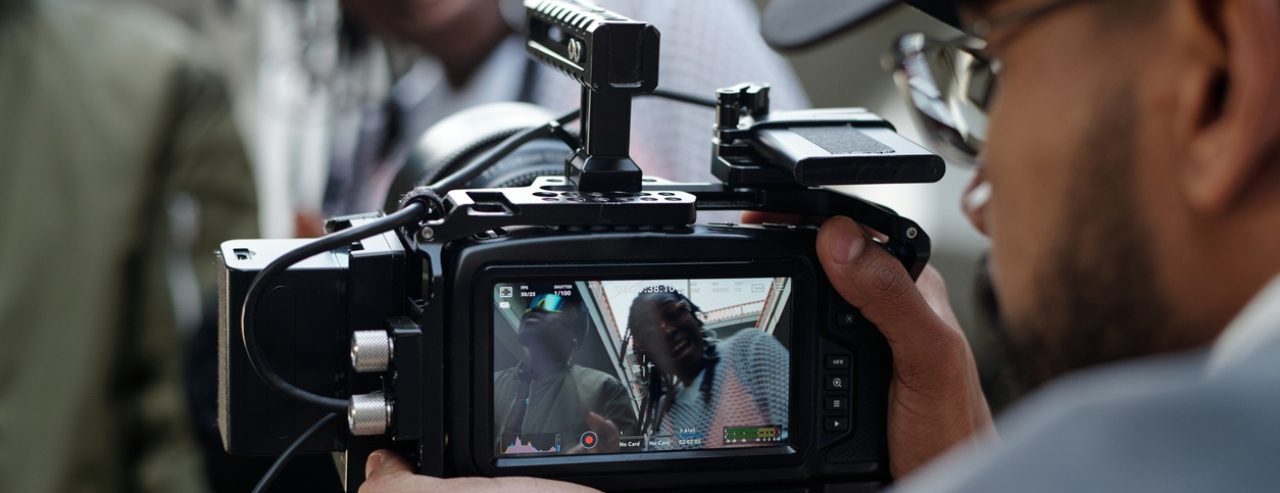The rise of the one-shot wonder: why single-take videos are captivating audiences

As a video producer, I’ve seen my fair share of visual trends come and go. But every so often, a technique resurfaces that reminds me just how thrilling the medium of moving pictures can be. Lately, that technique is the one-shot video. Films, series, or ads crafted in a single, seamless take. No cuts. No edits. Just one continuous, choreographed stream of motion. It’s bold, it’s brave, and when it’s done right, it’s brilliant.
Take Adolescence, the new Netflix series where each of the four episodes is filmed entirely in one shot: a technical feat and a creative triumph that redefines what we expect from long-form storytelling.
Or Blinkink’s/Uncommon’s spectacular timelapse-meets-one-take spot for BritBox, which compresses decades of British telly into a single dizzying walkthrough. These pieces don’t just show off; they immerse, they surprise, and most importantly, they make you feel something. That got me thinking about how (and why) one-shot videos work so well.
Where it all began
Let’s rewind for a second. The one-shot approach isn’t new. Alfred Hitchcock gave it a go back in 1948 with Rope, crafting long, unbroken takes to mimic a real-time experience (although the limits of film reels at the time meant he had to sneak in hidden cuts).
Since then, filmmakers have used the technique to varying degrees — from Russian Ark in 2002, to the beautifully choreographed “single take” illusions in Birdman and 1917 (again, they sneaked in hidden cuts).
One of my favourite one-take sequences (and possibly one of my favourite pieces of cinematography altogether) is the incredible scene from 2006’s Children of Men, where we follow the action in real time for an exhilaratingly tense 6-minute sequence. I can’t even blink when I watch it!
What was once the domain of daring directors is now finding its way into TV series, music videos, and, interestingly, brand campaigns. Why? Because the emotional and visual payoff is massive - and audiences notice.
Why it works so well
There’s something hypnotic about a true one-shot. It feels alive. It puts you right in the moment, as though you’re walking through the story in real time. Without cuts, there’s no “escape”, the stakes feel higher, the performances more immediate, and the viewer more involved. It builds tension.
Technically speaking, there’s also a spectacle to it. We know (even if only subconsciously) that what we’re watching is hard to pull off. The precision. The timing. The choreography. And when it works, it’s a little bit magic. You’re not just watching a story unfold: you’re watching the craft unfold too.
Behind the lens: what it really takes
From a production standpoint, pulling off a one-shot is equal parts exhilarating and terrifying. Everything, and I mean everything, must be nailed in one go. Blocking, lighting, timing, dialogue, camera movement… it all needs to sync like a finely tuned dance.
Rehearsals become essential, making it more like theatre than film in many ways. There’s nowhere to hide mistakes. If someone trips over a lighting cable with seconds to go - it’s ‘back to first positions’. But when the pieces align, the results can be electric.
Many moons ago, I produced a one-shot short film (which also involved a stuntman crashing through a pane of glass). After a day spent blocking it out and rehearsing, we got the shot in the first take! It was incredibly nerve-wracking on set, but the final result was fantastic, and I feel like that underlying tension is tangible in the finished film.
Gear-wise, we’ve come a long way. Gimbals, drones, and compact cinema cameras have made single takes more feasible than ever. And smartphones have opened the door for indie creators and marketers alike.
When ads go one-shot
One of the best examples of recent one-shot advertising has to be Blinkink’s BritBox ad. In under a minute, you move through decades of British pop culture, and it’s all done with such finesse that you barely notice the transitions.
From a marketing perspective, one-shot videos stand out. They break the scroll. They suggest craft and care, and they offer a kind of storytelling clarity that cuts through the noise.
Should you try it?
Look, I’m not saying every brand should rush out and attempt a one-take masterpiece. They’re not right for every message or budget. But if you’ve got a strong narrative, a visually dynamic concept, or even just a product journey that can unfold in a single motion, the one-shot format can be a game-changer.
Just make sure the technique serves the story, not the other way around.
Final take
So, is the one-shot just a passing fad? I don’t think so. In fact, I’d argue it’s one of the most exciting storytelling tools in our visual toolbox right now. It taps into something timeless: our love of theatre, of live performance, of holding our breath until the scene ends.
And for brands willing to take the risk (and put in the prep!) the reward is something unforgettable.